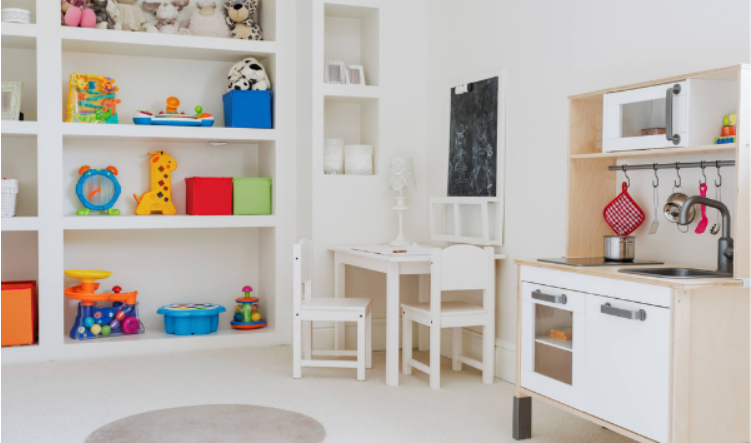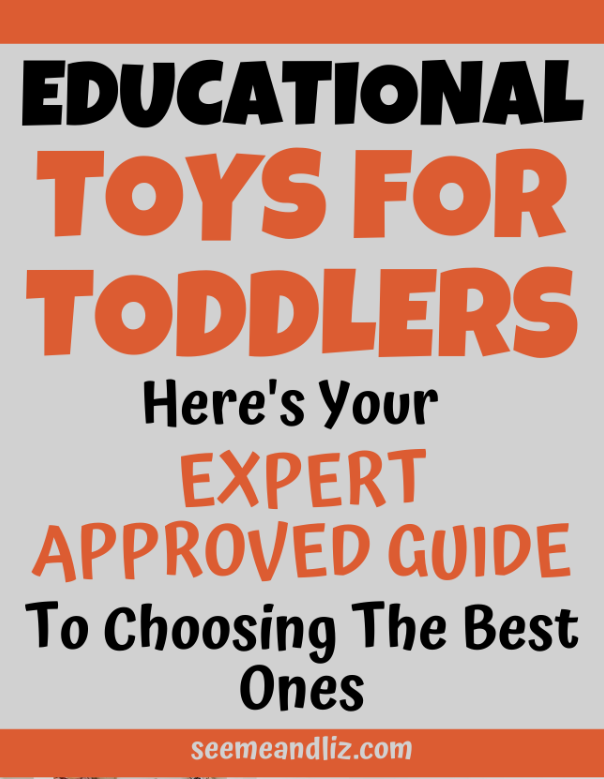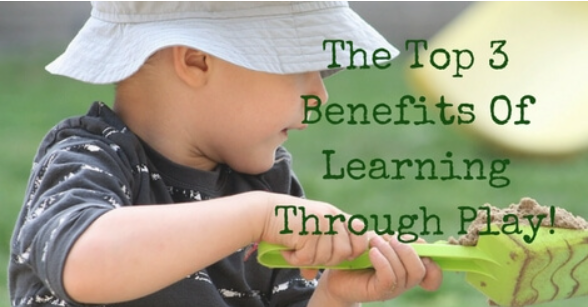Kids toy kitchens are amazing for so many reasons. In fact, there are 10 reasons that sets this toy apart from the rest that I want all parents and educators to know about!
If you already have a toy kitchen but your kids seem to have forgotten about it, then this article may help you help your child(ren) rediscover it.
Before we get started make sure you take a look at the following article to see some great play kitchens and how they can help with language development (language development tips are listed at the end of the article):
The 5 Best Kids Play Kitchens: They Will All Encourage Language and Learning!
Kids Toy Kitchens Are A Must Have For Learning & Skill Building!
There are actually more than 10 reasons to get a kitchen for your child.
But, these are the most important ones.
It’s A Toy That Grows With Your Child
We purchased a play kitchen for our daughters for her 2nd birthday.
Until my kids were about 9 and 11 it was still one of their favorite toys.
We finally handed it down to friends with young kids that year!
My kids would go through phases of playing with it and then ignoring it as they got older. But they always came back to it.
It is also interesting to watch how the play changes as your child gets older.
The play scenarios become more elaborate and the kitchen is used for so many other things.
It’s great seeing a child’s imagination soar!
Play Kitchens Come In Many Sizes
You don’t need a large house with a dedicated playroom to have a kids kitchen.
You can even get “starter kitchens” for toddlers. These are mini versions of the larger ones.
While these small kitchens are great while your child is young, it probably will be outgrown pretty quickly.
I would recommend starting out with a standard size kitchen so that your child will have it for many years.
The Little Tikes Cook n’ Grow kitchen (pictured below) is the perfect blend of a starter kitchen and a more standard toy kitchen.
If you have a very small space take a look at some of the kitchens meant to go into the corner of a room.
Great For The Development of Pretend Play
This should probably be the number one reason to get a pretend play kitchen for your child.
The imagination and creativity that they can inspire during play is endless.
It really is the perfect toy for open ended child led play!
My children used to transform their toy kitchen into a rocket ship, a school, a cupcake shop and a puppet theater.
They have also placed chairs around it and covered everything with blankets so that they could have a kitchen in their fort.
Children can play house, restaurant and anything else they can dream up.
Vocabulary Building
I always incorporated a play kitchen into my speech therapy sessions with children whose goal was to increase their vocabulary.
You can focus on basic kitchen vocabulary including:
- Nouns such as – plate, cup, fork, knife, apple, bread, chicken, etc.
- Verbs such as – cut, pour, wash, dry, stir, bake, freeze, etc.
- Opposites such as – hot/cold, wet/dry, big/little, full/empty, etc.
Or if your child is older and is using the kitchen as part of a restaurant scenario they can talk about restaurant vocabulary as well.
For example: waiter/waitress, chef, menu, customers, etc.
Promotes Social skills
When several children are playing at a kitchen together they need to work on turn taking skills because not everyone can do the same thing at the same time.
If the children are older they will need to work together to determine who will play what role in the scenario.
Children need to combine their efforts to come up with new and interesting ways to use the kitchen.
Fine Motor Skill Development
Children can practice their fine motor skills by picking up small pieces of food (most kitchens come with accessories including food, utensils and dishes, but you can buy accessory packs separately as well) and then placing them onto plates or in cups.
Many kitchens have knobs that can be turned which means a child needs to use fine motor skills in order to do this.
Some of the food accessories you can purchase are actually meant for children to practice their cutting skills.
For example, a cucumber is cut in half and attached together by pieces of velcro.
Your child can use a plastic knife (this comes with many of the sets) in order to cut the food in half.
Problem Solving Skills
There are a variety of problems that can arise when your child is playing at a toy kitchen.
For example, not all the dishes will fit in the cupboard, so your child will need to figure out other storage solutions.
Or, your child wants to serve pizza in his restaurant but there is no food to represent pizza.
What could be used as the pizza?
If several children are playing together there is a greater chance that more problems will happen.
They will need to work together to figure these out.
Categorization Skills
Talk to your child about different food groups and non food groups.
Sort the items in your kitchen.
For example, all of the cutlery can go into one basket, the dishes can go into a cupboard.
All of the fruits can go into the red bag and the vegetables can go into the green bag.
Or try sorting food by color!
The ability to categorize and organize is an executive function skill that all children need to have in order to expand their vocabularies and organize their thoughts to form logical sentences and make decisions.
I could write a lot about the importance of categorization and how pretend play helps with this skill, but I think I will save that for another article.
Practice Printing Skills
If your child is older (4+), encourage them to write out a menu for the restaurant.
Or next time you are at a restaurant, ask for an extra copy of the kids menu (they are usually paper) and then photocopy it.
Your kids can use this as the menu for their restaurant.
The child that is being the waiter can write down the guests orders.
The menu can be used if your child is unsure of the spelling of certain items.
Children under the age of 4 can also make their own custom menus – although only they will probably know what it all means!
Counting/Colors
Kids kitchens are great for working on counting and colors through play.
I am a b advocate against pushing early academic skills on to our kids.
However, I do believe that skills such as counting (math), color recognition and literacy are important for all children to learn.
It is the way you go about introducing these skills to your child that is crucial.
While your child is at the play kitchen, you can join in on the play.
Wash some dishes, make some food and then start counting all the plates.
See if your child is interested. If the answer is yes, have them count with you.
Or if they are already getting the hang of counting see if there are any items they would like to count on their own.
You can also work on colors in the same way.
Talk about the red pepper, the red tomato, the yellow banana and the yellow plate for example.
Before you head out in search of the perfect toy kitchen for your child make sure to take a look at 5 of the best kids play kitchens that I have found that will fit everybody’s need (space, budget, gender, etc.).
I have also included a bonus speech and language development section at the end of the article!
A Kids Toy Kitchen Is The Best Toy For Children!
As you can see there are many reasons why kids toy kitchens are great for learning through play!
Does your child have a pretend play kitchen?
Please share some ways that the kitchen encourages his/her imagination and pretend play.




